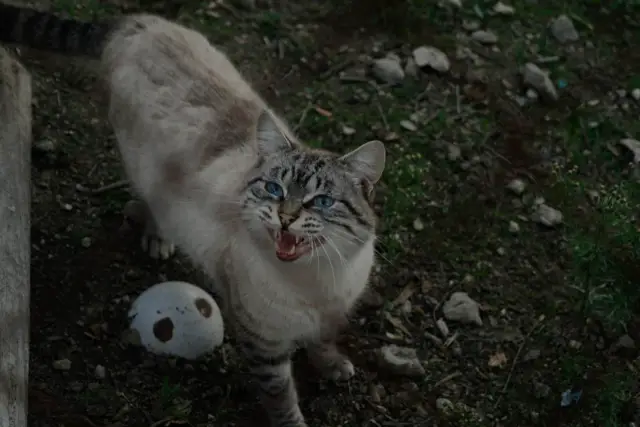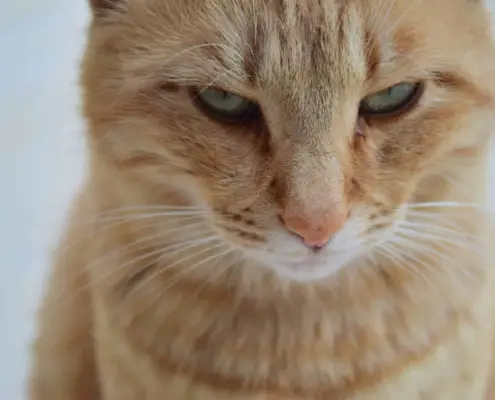
Cats are mysterious creatures, often leaving their owners puzzled about what they are thinking or feeling. However, understanding feline communication is key to building a strong bond with your furry companion. Cats have their unique ways of expressing themselves, and by decoding their body language and vocalizations, you can gain valuable insights into their emotions and needs.
Decoding Cat Body Language
A cat’s body language can reveal a wealth of information about their mood and intentions. When a cat is relaxed and content, they typically have a slightly arched back, relaxed ears, and their tail is held upright. On the other hand, if a cat feels threatened or scared, they may flatten their ears against their head, tuck their tail between their legs, and crouch low to the ground.
Pay attention to your cat’s eyes as well. Dilated pupils often indicate excitement or fear, while narrowed eyes may signify aggression. If a cat’s hair stands on end, known as piloerection, it is a clear sign that they are feeling threatened or defensive.
Vocalizations: What Do Different Cat Sounds Mean?
Cats communicate through a variety of vocalizations, and each sound has its own meaning. Meowing is perhaps the most common sound cats make, and it can have various interpretations depending on the situation. A short, high-pitched meow often indicates a greeting or a request for attention, while a loud, drawn-out meow may signify hunger or distress.
Purring is another vocalization that cats use to communicate. Contrary to popular belief, purring doesn’t always indicate contentment. Cats also purr when they are anxious or in pain, so it’s important to consider the context in which the purring occurs.
Hissing, growling, and yowling are sounds that cats use to express anger, fear, or frustration. These vocalizations serve as warnings to potential threats, and it’s best to give the cat some space until they calm down.
Tail Talk: Interpreting a Cat’s Tail Movements
A cat’s tail is like a barometer of their emotions. By observing their tail movements, you can gain valuable insights into what they are feeling. A relaxed, gently swaying tail usually indicates a content and calm cat. On the other hand, a rapidly twitching or lashing tail is a sign of agitation or aggression.
A puffed-up tail indicates extreme fear or aggression, and it’s a clear warning to stay away. When a cat wraps its tail around you or another object, it is a sign of affection and trust. Understanding these tail movements can help you gauge your cat’s mood and respond accordingly.
Eye Contact and Facial Expressions: Reading a Cat’s Emotions
Just like humans, cats use their eyes and facial expressions to convey their emotions. Direct eye contact from a cat is usually a sign of trust and affection. However, prolonged staring can be interpreted as a challenge or threat, especially if accompanied by dilated pupils.
A relaxed and open facial expression, with slightly squinted eyes and soft features, indicates contentment. On the other hand, a tense expression with wide eyes and a furrowed brow may suggest fear or anxiety. Pay attention to these subtle cues to better understand your cat’s emotional state.
Purring: The Meaning Behind a Cat’s Purr
Purring is often associated with a happy and content cat, but its meaning goes beyond that. Cats also purr when they are anxious, in pain, or seeking comfort. It’s important to consider the context in which your cat purrs to accurately interpret their emotions.
If your cat purrs while being petted or cuddled, it usually signifies pleasure and relaxation. However, if your cat purrs while at the vet or during a stressful situation, it may be a coping mechanism to soothe themselves. Understanding the nuances of purring will help you provide the right care and support for your feline friend.
Understanding Cat Behavior: What Certain Actions Indicate
Cats have their unique ways of behaving, and these actions often convey specific messages. For example, if a cat rubs against your legs, they are marking you as part of their territory and showing affection. Rolling over and exposing their belly is a sign of trust and vulnerability.
Kneading, where a cat rhythmically pushes their paws against a soft surface, is a behavior they exhibit from kitten-hood. It’s a sign of contentment and often a way to show affection. However, be mindful of their claws during this behavior, as it can accidentally lead to scratches.
Hiding and seeking solitude may indicate that a cat is feeling stressed or overwhelmed. On the other hand, excessive vocalizations, destructive behavior, or aggression can be signs of underlying health issues or unmet needs. By understanding these behaviors, you can better respond to your cat’s needs and address any concerns.
Building a Connection with Your Cat: Tips for Effective Communication
To establish a strong bond with your cat, effective communication is essential. Here are some tips to help you connect with your feline companion:
- Spend quality time together: Set aside dedicated time each day to interact with your cat. Play with them, groom them, or simply sit quietly in their presence. This will help build trust and strengthen your bond.
- Observe and listen: Pay attention to your cat’s body language, vocalizations, and behaviors. Take note of their preferences, likes, and dislikes. This will help you understand their unique personality and needs.
- Use positive reinforcement: Reward your cat with treats, praise, or playtime when they exhibit behaviors you want to encourage. This will help them associate positive experiences with desired actions.
- Respect their boundaries: Cats are independent creatures and need their personal space. Avoid forcing interactions or handling them when they show signs of discomfort. Give them the freedom to approach you when they feel ready.
- Be patient and understanding: Just like humans, cats have their moods and preferences. Respect their individuality, and don’t expect them to behave in a certain way all the time. Building a connection takes time and patience.
Common Misconceptions about Cat Communication
There are several misconceptions about cat communication that can hinder our understanding of their needs. One common misconception is that cats are solitary animals that don’t require social interaction. In reality, cats are social creatures that form strong bonds with their human companions and other pets.
Another misconception is that a wagging tail in cats is always a sign of happiness, similar to dogs. However, a cat’s wagging tail usually indicates agitation or irritation. Understanding these misconceptions will help you communicate effectively with your cat and meet their emotional and social needs.
Strengthening the Bond with Your Feline Companion
Mastering feline language is a journey that requires observation, patience, and understanding. By decoding their body language, vocalizations, and behaviors, you can gain valuable insights into your cat’s emotions and needs. Building a strong bond with your feline companion involves effective communication and respecting their individuality. By following the tips and guidelines in this guide, you can strengthen your relationship with your cat and create a harmonious and fulfilling companionship.
If you enjoyed my article, I would appreciate you sharing it with your network.

Sima Ndlebe
Sima writes for CatBuzz. He is interested in Cats, Health and Fitness, and Entrepreneurship.
Published: 31 October 2023




